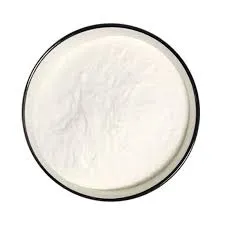
aug . 30, 2024 01:06 Back to list
HPMC (Hydroxypropyl Methylcellulose) - Uses, Benefits, and Applications
Understanding HPMC and Its HS Code
Hydroxypropyl Methylcellulose (HPMC) is a versatile and widely used cellulose ether derived from natural cellulose. It’s primarily utilized across various industries due to its unique properties, including thickening, emulsifying, and film-forming capabilities. HPMC is a key ingredient in products ranging from pharmaceuticals and food to construction materials and personal care items.
Understanding HPMC and Its HS Code
In the food industry, HPMC serves as a food additive, often labeled as E464. It acts as a thickener and stabilizer, improving the texture and mouthfeel of various food products. Its non-toxic and vegan-friendly profile makes it an attractive option for manufacturers looking to enhance their food products without the use of animal-derived ingredients.
hpmc hs code

In construction, HPMC is incorporated into cement-based products, such as tile adhesives, to improve workability and adhesion. It provides excellent water retention, ensuring that the mixture remains workable for more extended periods, which is crucial during the application process.
One crucial aspect of HPMC is its classification under the Harmonized System (HS) codes, which standardize the identification and classification of goods for international trade. The HS code for Hydroxypropyl Methylcellulose varies depending on its specific form and intended use. Typically, it falls under Chapter 39, which encompasses plastics and articles thereof. For example, HPMC is often classified under HS Code 3912, which relates to other cellulose ethers, including methyl cellulose and carboxymethyl cellulose.
Understanding HPMC's HS code is essential for manufacturers and traders involved in international commerce. This knowledge assists in ensuring compliance with customs regulations, determining tariffs, and streamlining the logistical processes associated with importing and exporting HPMC-containing products.
In conclusion, Hydroxypropyl Methylcellulose is a valuable component across diverse industries due to its multifunctional properties. Its classification under the appropriate HS code facilitates smoother trade practices and regulatory compliance, making it a crucial element in the global supply chain. As industries continue to innovate and seek eco-friendly solutions, the demand for HPMC is likely to grow, highlighting the importance of understanding its applications and classifications in the market.
-
What is HPMC?
NewsJun.06,2025
-
Understanding Redispersible Powder: The Future of Construction Materials
NewsJun.06,2025
-
Understanding RDP Powder: The Ultimate Solution for Your Construction Needs
NewsJun.06,2025
-
Pure HPMC: The Ideal Solution for Modern Construction and Building Materials
NewsJun.06,2025
-
Methyl Hydroxyethyl Cellulose: A Versatile Chemical Compound
NewsJun.06,2025
-
Hydroxyethyl Cellulose Power: The Essential Chemical for Various Industries
NewsJun.06,2025







